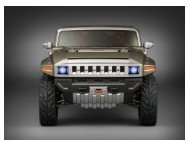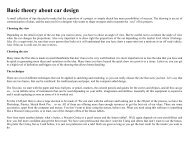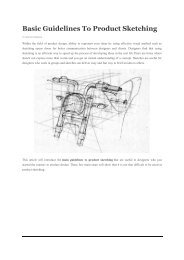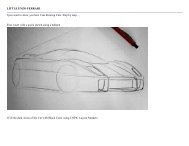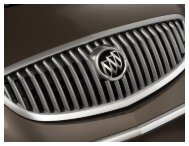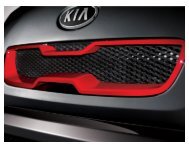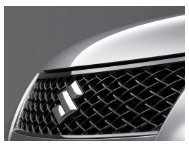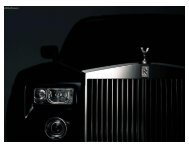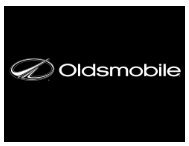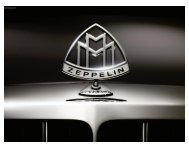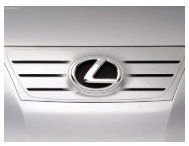Isuzu
Isuzu - ACDAC
Isuzu - ACDAC
- No tags were found...
You also want an ePaper? Increase the reach of your titles
YUMPU automatically turns print PDFs into web optimized ePapers that Google loves.
<strong>Isuzu</strong><br />
<strong>Isuzu</strong> Motors Ltd. or <strong>Isuzu</strong> Jidōsha<br />
Kabushiki-gaisha<br />
Type Public TYO: 7202<br />
Founded April, 1937<br />
Headquarters<br />
Products<br />
Website<br />
Tokyo, Japan<br />
Commercial vehicles, Diesel engines<br />
website <strong>Isuzu</strong>.co.jp<br />
<strong>Isuzu</strong> Motors Ltd. (いすゞ 自 動 車 株 式 会 社 <strong>Isuzu</strong> Jidōsha Kabushiki-gaisha), (TYO: 7202) is a Japanese car, commercial vehicle and heavy truck<br />
manufacturing company, headquartered in Tokyo. In 2005, <strong>Isuzu</strong> became the world's largest manufacturer of medium to heavy duty trucks. It has assembly and<br />
manufacturing plants in the Japanese city of Fujisawa, as well as in the prefectures Tochigi and Hokkaidō. <strong>Isuzu</strong> is famous for producing commercial vehicles<br />
and diesel engines - it produced 16 million diesel engines in 2003 alone, which can be found in vehicles all over the world.<br />
In most of Asia, Africa, and Europe, <strong>Isuzu</strong> is mostly known for trucks of all sizes, after <strong>Isuzu</strong> small automobile sales drastically plummeted and <strong>Isuzu</strong> had to drop<br />
all sales of sedans and compact cars in the late 1990s. In the United States, <strong>Isuzu</strong> has ceased selling passenger vehicles. <strong>Isuzu</strong> as a corporation has always been<br />
primarily a manufacturer of small to medium compact automobiles and commercial trucks of sizes medium duty and larger, but markets around the world show<br />
different needs. <strong>Isuzu</strong> has a contract with Budget Truck Rental to manufacture their rental trucks. This contract is also shared with Ford, GMC, and Navistar<br />
International.<br />
On November 7, 2006, Toyota acquired 5.9% of <strong>Isuzu</strong>, making them the third largest shareholder behind ITOCHU and Mitsubishi Corporation.
History<br />
• 1916 - Tokyo Ishikawajima Shipbuilding and Engineering Co., Ltd. and Tokyo Gas and Electric Industrial Co. cooperatively plan to build automobiles.<br />
• 1918 - A technical cooperation with Wolseley Motor Company (UK) is initiated. In 1922 the first Wolseley model A-9 car is domestically produced. The<br />
CP truck follows two years later.<br />
• 1933 - Ishikawajima Automotive Works merges with DAT Automobile<br />
Manufacturing and changes its name to Automobile Industries Co., Ltd.<br />
• 1934 - A meeting with the Ministry of Trade and Industry results in the renaming of<br />
the truck to <strong>Isuzu</strong>, after the <strong>Isuzu</strong> River. The word translated into English means<br />
"fifty bells".<br />
• 1949 - <strong>Isuzu</strong> is adopted as company name.<br />
• 1953 - With technical assistance of Rootes (UK) the Hillman Minx passenger car is<br />
produced.<br />
• 1971 - A capital agreement with General Motors is signed.<br />
• 1972 - The Chevrolet LUV becomes the first <strong>Isuzu</strong>-built vehicle to be sold in the<br />
United States. A decade later, it is replaced by a domestic vehicle, the Chevrolet S-<br />
10.<br />
• 1973 - <strong>Isuzu</strong> introduces the Gemini, which is co-produced with General Motors. It<br />
is sold in the United States as Buick's Opel by <strong>Isuzu</strong>.<br />
• 1981 - <strong>Isuzu</strong>-branded consumer and commercial vehicles are successfully exported<br />
to the United States. The <strong>Isuzu</strong> P'Up is the first model sold to consumers as an<br />
<strong>Isuzu</strong>, instead of a Chevrolet or Buick.<br />
• 1987 - SIA (Subaru-<strong>Isuzu</strong> Automotive) is established as a joint venture with Fuji<br />
Heavy Industries (parent company of Subaru). Shortly thereafter, the Lafayette,<br />
Indiana plant becomes operational.<br />
• 1993 - <strong>Isuzu</strong> ceases to export the Stylus (Geo Spectrum), its last cars in America, after ending the Impulse (Geo Storm) the year before.<br />
• 1994 - <strong>Isuzu</strong> announces new vehicle exchange program with Honda, providing Honda with the <strong>Isuzu</strong> Rodeo (to be sold as the Honda Passport) and <strong>Isuzu</strong><br />
Trooper (to be sold as the Acura SLX) and providing <strong>Isuzu</strong> with the Honda Odyssey (to be sold as the <strong>Isuzu</strong> Oasis). This has the effect of adding two<br />
SUVs to Honda's lineup and a minivan to <strong>Isuzu</strong>'s lineup.<br />
• 1996 - <strong>Isuzu</strong>'s sales peak in the United States.<br />
• 1998 - General Motors and <strong>Isuzu</strong> form DMAX, a joint venture to produce diesel engines. <strong>Isuzu</strong> resurrects the beloved Amigo. The uniquely styled<br />
VehiCROSS concept is unveiled.<br />
• 1999 - GM raises its stake in <strong>Isuzu</strong> to 49%, effectively gaining control of the company. GM quickly follows this up with the appointment of an American<br />
GM executive to head <strong>Isuzu</strong>'s North American Operations. This is the first time a non-Japanese executive has ever held such a high position at <strong>Isuzu</strong>. The<br />
U.S. introduction of the production version of the heralded VehiCROSS is met with mixed reviews, as its high pricetag, unique styling and two-door<br />
configuration don't seem to meet with market demands.<br />
• 2000 - Concept convertible version of the VehiCROSS appears in the movie Mission to Mars.
• 2001 - Joe <strong>Isuzu</strong>, the immensely popular pitchman with implausible claims, is hired once again to promote the new Axiom. <strong>Isuzu</strong> sales begin to slide due<br />
to the aging of the Rodeo and Trooper, and poor management & lack of assistance from GM. <strong>Isuzu</strong> changes the name of the 2-door Amigo convertible to<br />
Rodeo Sport in an attempt to associate it with the better selling 4-door Rodeo. Movie Spy kids features <strong>Isuzu</strong> Axiom and Trooper.<br />
• Early 2002 - Fuji Heavy Industries (Subaru's parent company) buys <strong>Isuzu</strong>'s share of Lafayette, Indiana plant. Subaru <strong>Isuzu</strong> Automotive (SIA) becomes<br />
Subaru of Indiana Automotive. After 8 years of heavy Honda Passport sales and light <strong>Isuzu</strong> Oasis sales, Honda and <strong>Isuzu</strong> cooperatively end their vehicle<br />
exchange agreement. The Oasis is dropped, and Honda replaces the Passport with the Pilot. Also, it was <strong>Isuzu</strong>'s last year for passenger vehicles in<br />
Canada, as <strong>Isuzu</strong>s in Canada were mostly sold at Saturn-Saab dealerships.<br />
• Late 2002 - <strong>Isuzu</strong> begins the re-purchase of its stock from shareholders, primarily General Motors. <strong>Isuzu</strong> reduces GM's 49% share to 12% as part of this<br />
comprehensive recapitalization plan. As part of this reorganization, GM gains full control of DMAX and <strong>Isuzu</strong> Motors Polska, as well as ownership of all<br />
diesel engine designs from <strong>Isuzu</strong>. <strong>Isuzu</strong> drops the venerable Trooper from the North American lineup.<br />
• 2003 - The Rodeo Sport is discontinued.<br />
• July 2004 - Production of the Rodeo and Axiom cease. Sales in North America slow to just 27,188, with the discontinued Rodeo and Axiom making up<br />
71% of that total. The number of <strong>Isuzu</strong> dealerships in the U.S. begins a rapid decline.<br />
• 2005 - <strong>Isuzu</strong> dealers in the United States have only 2 models: the Ascender and the i-series pickup truck. The i-series is a rebadged Chevrolet Colorado,<br />
the Ascender is a re-badged GMC Envoy. At this point, <strong>Isuzu</strong> in the United States is primarily a distributor of medium duty trucks such as the NPR series.<br />
These vehicles are sourced both from Japan and U.S. plants in Janesville, WI and Flint, MI. <strong>Isuzu</strong> has 290 light-vehicle dealers in the U.S. as of August<br />
2006, and sells an average of just two Ascenders per dealer per month. Plans to introduce a new Thai-built SUV, expected to be added for 2007, are<br />
shelved; <strong>Isuzu</strong> Motors Limited believes that a new SUV would be too risky and proceeds with the launch of the i-series trucks. Rumors of <strong>Isuzu</strong>'s<br />
withdrawal from the U.S. market are rampant. Despite extremely low sales figures of 12,177 passenger vehicles for 2005 (with leftover Axiom and<br />
Rodeos making up 30% of this), <strong>Isuzu</strong> Motors America announces its first profit in years, mainly due to restructuring cuts.<br />
• 2006 - Production of the 7-passenger Ascender ends in February with the closure of GM's Oklahoma City Assembly plant, leaving <strong>Isuzu</strong> with the 5-<br />
passenger Ascender, built in Moraine, Ohio, and the low-selling i-Series as its only retail products. The company sold just 1,504 vehicles in North<br />
America in the first two months of 2006. <strong>Isuzu</strong> finally purchases its remaining shares from GM, but claims the companies will continue their current<br />
relationship. There is no word as of April 12, 2006 on the effect this will have on DMAX USA operations.<br />
• June 2006 - <strong>Isuzu</strong> and GM Agree to establish Joint Venture called "LCV Platform Engineering Corporation (LPEC)" to develop a new pickup. <strong>Isuzu</strong> says<br />
it will use its engineering expertise to develop the pickup and GM will develop derivatives based on the integrated platform.<br />
• November 2006 - Toyota purchases 5.9% of <strong>Isuzu</strong> and the two companies agree to study possible business collaboration focusing on the areas of R&D<br />
and production of diesel engines, related emissions-control, and other environmental technologies.<br />
• January 2007 - <strong>Isuzu</strong>, along with General Motors Companies, release an update to the LCV range, with a 3.0 litre common rail diesel motor, with far<br />
more torque and power to its predecessor<br />
• August 2007 - <strong>Isuzu</strong> and Toyota agree to develop a 1.6-liter diesel engine for use in Toyota vehicles sold in European markets. Details of development,<br />
production and supply of the diesel engine, are still under discussion, but in principle, <strong>Isuzu</strong> will play the leading role. Production is scheduled to begin<br />
around 2012.<br />
• January 30, 2008 - <strong>Isuzu</strong> announces complete withdrawal from the US market, effective January 31, 2009. It will continue to provide support and parts.<br />
The decision was mainly affected by slowing sales. <strong>Isuzu</strong> had been experiencing a slow decline since the late 1990s. In less than 10 years, they had gone<br />
from selling a complete line of cars, trucks, and SUVs, into being a specialized SUV maker, and finally selling only a pair of rebadged, General Motors<br />
Trucks. They will continue to sell commercial vehicles in the U.S.<br />
• January 29, 2009 - <strong>Isuzu</strong> and General Motors announce that they are in talks to transfer the operation of the medium-duty truck production line in Flint,<br />
Michigan to <strong>Isuzu</strong> for a five-year period. In June, however, GM announces that these talks have failed to reach an agreement, and GM is ceasing<br />
production of the Chevrolet Kodiak and GMC Topkick vehicles on July 31, 2009. [5]
Models<br />
Passenger vehicle and SUVs<br />
• 1963–1973, Bellett sedan (PR20) and 2 door GT (PR90 & PR91)<br />
• 1967-1983, <strong>Isuzu</strong> Florian<br />
• 1968-1981, 117 Coupe<br />
• 1974–2000, Gemini/I-Mark/Stylus sedan<br />
• 1983–1992, Piazza/Impulse/Storm hatchback<br />
• 1983–2002, Aska sedan<br />
• 1983–2002, Trooper midsize SUV<br />
• 1983–1995, <strong>Isuzu</strong> P'up and TF models Real Japan built from 1987-1991, 1991-1995 were US Built<br />
• 1989-1994, Amigo A compact SUV (First generation)<br />
• 1991–2004, Rodeo a small SUV<br />
• 1991-present, Panther, a van sold in Indonesia, sold as the <strong>Isuzu</strong> Hi-Lander / Crosswind in the Philippines, also sold throughout the ASEAN, and in India<br />
as the Chevrolet Tavera<br />
• 1996-1999, <strong>Isuzu</strong> Oasis minivan, a rebadged Honda Odyssey<br />
• 1996–2000, <strong>Isuzu</strong> Hombre pickup truck, a rebadged Chevrolet S10<br />
• 1998-2003, Amigo/Rodeo Sport A compact SUV (Second generation)<br />
• 1999–2001, VehiCROSS halo SUV<br />
• 2001–2004, Axiom midsize SUV<br />
• 2002–2008, Ascender large SUV<br />
• 2002-present, D-Max Pickup Truck, a top selling diesel sold in the majority of <strong>Isuzu</strong> markets (excluding North America)<br />
• 2006–2008, i-280/i-350 pickup truck (a product of the co-developed D-Max platform <strong>Isuzu</strong> sells overseas) now sold as the I-290/I-370<br />
Commercial vehicles<br />
• Elf - Light Duty Truck (N-Series)<br />
• Forward - Medium Duty Truck (F-Series)<br />
• Giga - Heavy Duty Truck (C-Series, E-Series)<br />
• Gala - Heavy Duty Bus<br />
• Gala Mio - Medium Duty Bus<br />
• Erga - Low Deck Heavy Duty Bus<br />
• Erga-J - Heavy Duty Bus<br />
• Erga Mio - Low Deck Medium Duty Bus<br />
• Journey - Light Duty Bus<br />
• Journey-J - Medium Duty Bus<br />
• H-Series - Heavy Duty Truck in United States only (Rebadged from GMC Topkick and Chevrolet Kodiak)
Concept cars<br />
• 1983 COA<br />
• 1985 COA-II<br />
• 1987 COA III, AWD mid engine coupe<br />
• 1989 Costa<br />
• 1989 MultiCROSS<br />
• 1989 4200R<br />
• 1991 Como<br />
• 1991 Nagisa<br />
• 1993 XU-1<br />
• 1993 VehiCROSS<br />
• 1995 Deseo<br />
• 1995 Aisance<br />
• 1997 VX-2<br />
• 1997 <strong>Isuzu</strong> Zaccar<br />
• 1999 <strong>Isuzu</strong> VX-O 2<br />
• 1999 Revolutionary Vehicle-KAI<br />
• 1999 ZXS<br />
• 2000 <strong>Isuzu</strong> VX-4<br />
• 2001 Zen<br />
• 2001 GBX<br />
Leaving U.S. market<br />
On January 30, 2008, <strong>Isuzu</strong> Motors America announced that it would discontinue the sale of passenger vehicles in the United States effective January 31, 2009.<br />
The company explained to its dealers that it had not been able to secure replacements for the <strong>Isuzu</strong> Ascender and <strong>Isuzu</strong> i-Series that would be commercially<br />
viable. <strong>Isuzu</strong> sold 7,098 cars in the year 2007.<br />
Most <strong>Isuzu</strong> U.S. passenger vehicle dealers became service and parts dealers. They continue to honor the warranties of <strong>Isuzu</strong> vehicles and still sell parts and<br />
accessories. <strong>Isuzu</strong> became the last automaker of the 2000s to withdraw from North American sales.<br />
This action did not affect <strong>Isuzu</strong>'s commercial vehicle or industrial diesel engine operations in the United States.



